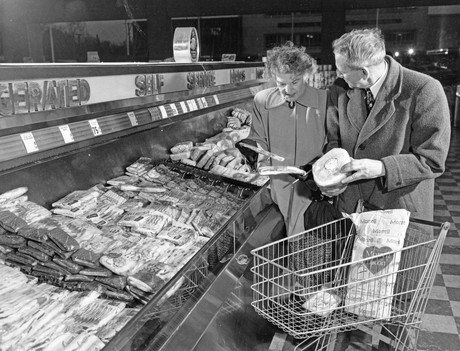Gastroporn: we eat first with our eyes

“We eat first with our eyes.” This is a saying with various origin stories. However, it doesn’t really matter who said it first, because modern science has proven that it is true. Here, Miguel Campos, Export Sales Manager of food packaging manufacturer Advanta, explains how important it is for food manufacturers to engage consumers with the right packaging.
Various studies have shown that humans rely heavily on their eyes when consuming food. An academic paper in the Elsevier journal Brain and Cognition, which is titled ‘Eating with our eyes: From visual hunger to digital satiation’, cites a range of evidence and explores what this means in the modern world, where we’re not foraging for the next meal in the wilderness.
We are currently in an environment saturated with smart devices, social media and hundreds of TV channels. The paper, which is jointly authored by representatives from Oxford University, UK; Yokohoma National University, Japan; and the Imagineering Institute, Malaysia, highlights how this has sparked new trends in how we respond to food.
The paper argues that the rise of ‘food porn’ or ‘gastroporn’, alongside the success of celebrity chefs and cooking programs, “has led to an inevitable exposure to visually succulent cooking procedures and beautifully portrayed dishes, often making use of foods that are less than healthy.”
Most people reading this will have been to dinner and either taken a snap of their meal before tucking in or waited for their dining companion to do the same. Social media sites like Instagram have created an environment in which we’re bombarded with images of the perfect meal.
This results in a large proportion of the global population seeking to replicate the effect and create a visually perfect meal. This is why it’s so important that packaging is able to entice consumers with the promise of an Instagrammable dinner.
Snap and it’s done
However, the fact is that, while we may want a gorgeous snap to get those all-important likes, we do not have the time to spend preparing, cooking and plating in the busy modern world.
According to an article in The Balance by Steve Johnson, the average home-cooked meal took 150 minutes to prepare in the 1940s. Today, ‘home cooked’ takes less than 30. Demand for easy-to-cook, pre-prepared or even pre-cooked meals is high, so the pressure is on for packaging to show the product will deliver high quality without mess or fuss — and it must do it quickly, because the need for speed starts long before we get to the kitchen.
According to research by WebpageFX into the psychology of colour, people make a subconscious judgement about a product within 90 seconds of an initial investigation. On top of this, 93% of people will chose a product based solely on its visual appearance.
Oh, and if all of this wasn’t enough pressure, demand is growing for ready meals that are more nutritious and provide a feeling of being authentic and home cooked while also being sustainable. A special report by FoodIngredientsFirst found that the growing trend for packaging these products with individual components of the meal stored in separate compartments has arisen from this consumer request, allowing for customisation.
The same report cites the zero-waste movement as one that has created consumer awareness around sustainability. This incorporates an awareness of the sustainability of the process of sourcing ingredients through to the choice of packaging material.
All wrapped up
Food manufacturers cannot underestimate the importance of selecting the right material to package their new product lines. If customers are making a judgement in just 90 seconds based on visual appearance, you can’t afford to get it wrong.
Selecting plastic results in a product that looks cheap and will most likely be associated with salt and fat-heavy microwave meals. Electing for something out of the ordinary, like glass or ceramic, will look unique — but it will also look expensive.
Aluminium, on the other hand, is a product that looks high quality, easily facilitates fuss-free preparation and cooking, is highly recyclable and reduces food waste.
According to the European Aluminium Foil Association, Alufoil, the material not only provides an absolute barrier against moisture, light and oxygen to keep food fresh for longer, it also saves far more resources than are consumed in its production throughout the supply and value chain. In addition, 75% of all aluminium ever produced is still in use thanks to its repeatable recyclability.
By working with a flexible manufacturer, such as Advanta, bespoke packaging designs can be created that suit product requirements while looking fantastic. This includes creating foil trays that are uniquely shaped and designed to ensure the perfect cooked result as well as trays in a variety of eye-catching colours.
Humans evolved to rely on their eyesight to spot food on the horizon while hunting or foraging. Today, we’re not so different. Eating starts with the eyes, the only thing that has changed is the evolution of the supermarket. Make sure you catch people’s attention with packaging that will make them salivate.
Apricot packaging goes linerless
Blossom Hill Packing has introduced a linerless fruit lid/fibre-based tray combo as part of its...
Edenvale Foods focuses on product innovation with the help of automation
As the functional snackfood business enters its next phase, it became crucial to upscale to...
Intelligent packaging solutions for the bakery industry
There have been many advancements in the bakery industry in recent years, particularly in the...











